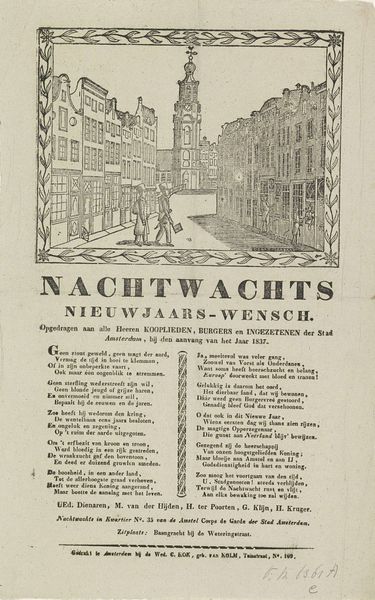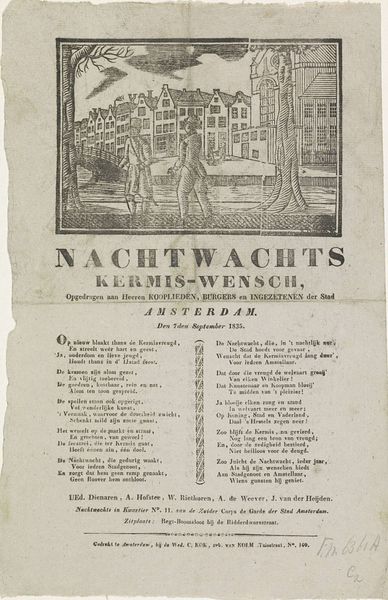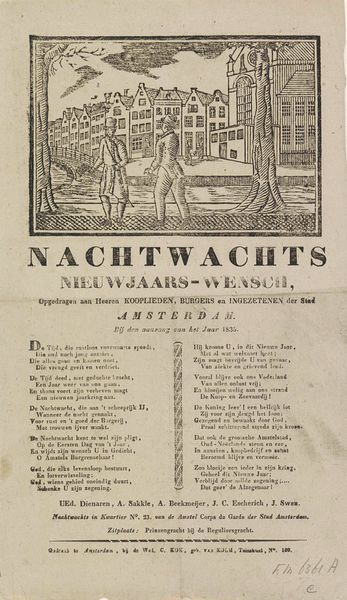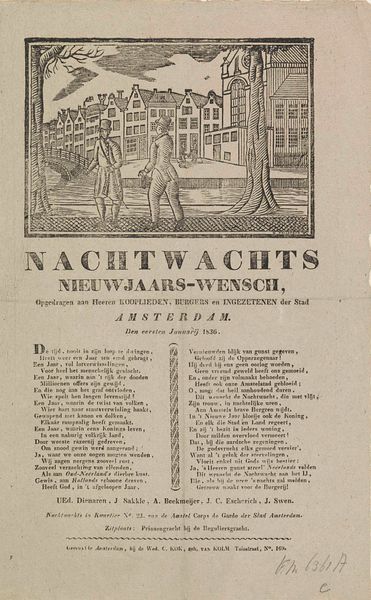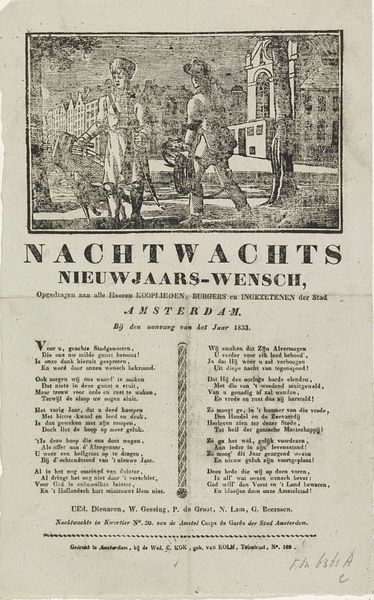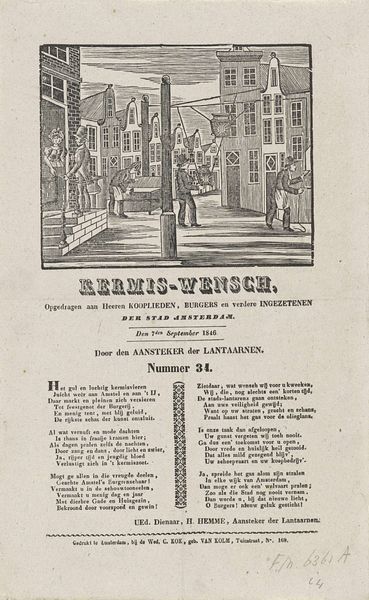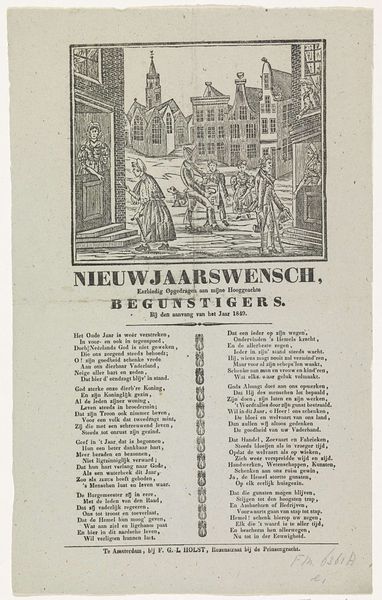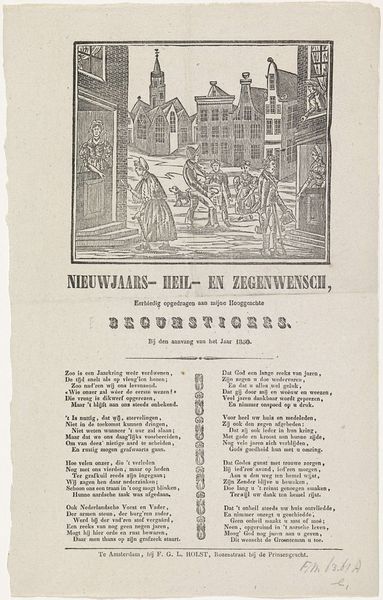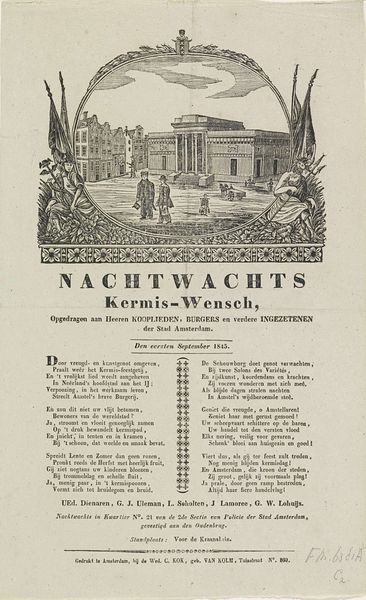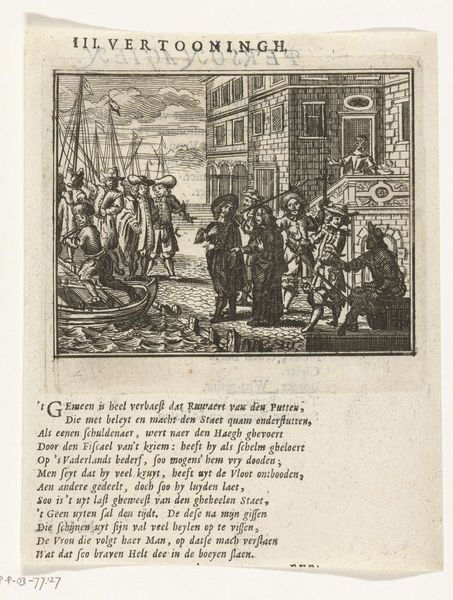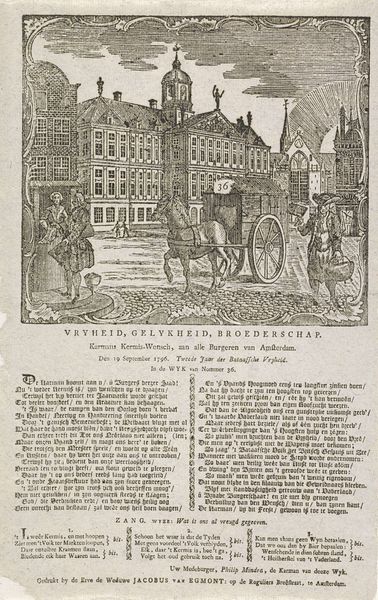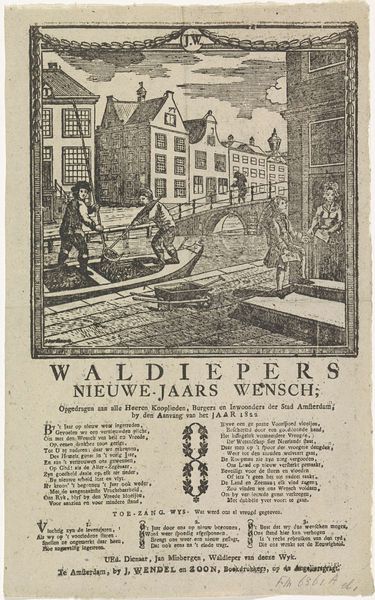
Nieuwjaarswens van de Amsterdamse nachtwacht voor het jaar 1845 1844 - 1845
0:00
0:00
print, textile, engraving
#
narrative-art
#
dutch-golden-age
# print
#
textile
#
cityscape
#
engraving
Dimensions: height 345 mm, width 220 mm
Copyright: Rijks Museum: Open Domain
Curator: Here we have "Nieuwjaarswens van de Amsterdamse nachtwacht voor het jaar 1845," an engraving likely printed on textile, dating between 1844 and 1845. It’s currently housed in the Rijksmuseum. What are your first impressions? Editor: Well, structurally, it’s quite interesting, the way it merges image and text. It feels almost like a poster or broadside, with a distinct separation yet also a clear visual link between the cityscape at the top and the dense block of text beneath. Curator: Absolutely. Considering its function as a New Year's greeting from the Amsterdam night watch, we see how production enabled widespread dissemination of civic good wishes and messaging in the community. This engraving would have been relatively inexpensive to produce. The materials and format made it accessible. Editor: Looking at the composition itself, the cityscape is rendered with remarkable detail given the constraints of the engraving technique. Notice the subtle gradations of light and shadow, particularly on the facades of the buildings. It really establishes depth and an atmospheric perspective despite its relatively small scale. Semiotically speaking, the text grounds the visual. Curator: Indeed. The text’s formal arrangement complements the pictorial section, with both working in tandem to communicate the intended message to the diverse social classes. The choice of textile as a printing medium, if confirmed, is relevant here. Textiles had significant domestic and commercial value. Editor: And thematically, the choice to depict Amsterdam, and to include poetic verses relating to the same imagery, strengthens the bond between citizen and city, all while the night watch takes on a celebratory public role, making New Year's greetings instead of policing at night. The semiotic connotations of figures, cityscape, text and the way all those things coexist gives us a picture of Amsterdam's values. Curator: Right, it moves beyond a simple visual document to become a social artifact embedded in a specific historical and cultural context. Editor: Ultimately, it highlights how form serves function and enhances our reading of its cultural import. Curator: And examining production adds nuance to this formal reading, reminding us that art rarely exists in a vacuum, or outside class relationships.
Comments
No comments
Be the first to comment and join the conversation on the ultimate creative platform.
